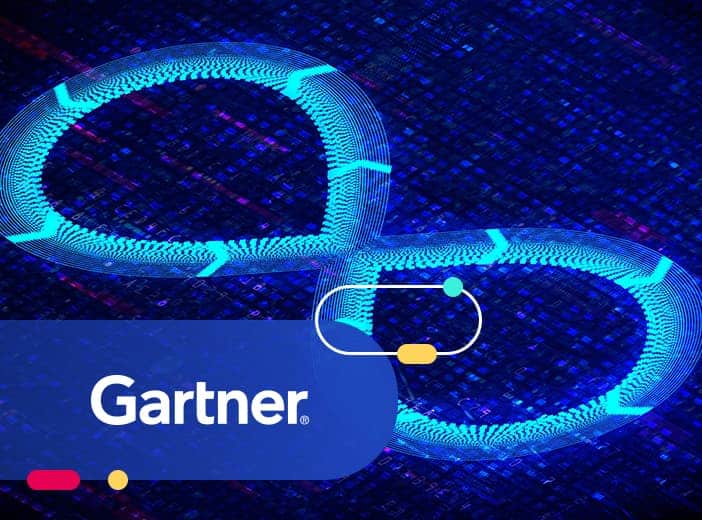What is data governance and why is it an essential foundation for data democratization?
Strong data governance is vital to extend the use and value of your data across your organization and ecosystem, but also to protect it and meet regulatory obligations. We explain the benefits and challenges of data governance and share best practice advice for successfully introducing programs that will help you become a data-driven organization.

Data democratization shares data internally and externally in ways that everyone can use and benefit from your data, driving digitization, innovation, development and transparency. However, the data you share has to be high-quality, trustworthy, securely held, and compliant with regulations such as the GDPR. That’s where a strong data governance framework is essential – without it you can’t share data with confidence, either internally or externally.
What are the aims of data governance?
Data governance covers how you handle and use the data collected in your organization. While this may seem straightforward, data governance is not simple. Think of how many datasets you may have within your business, the different formats they are in, and the potentially hundreds of locations where they are stored. Managing all of this data so that it is readily available, high-quality and relevant is vital. Without data governance your investments in your data stack will not deliver true value.
- Data governance helps ensure that data is:
- Consistent (you use the same formats for data fields (such as customer names) across the organization)
- Trustworthy (it is accurate and up to date)
- Secure (it cannot be accessed by the wrong people)
- Used correctly (it is not being misused by staff or external stakeholders)
- Compliant (it meets regulations and respects the privacy of individuals)
It widens re-use by everyone in the organization to help enable better decisions, supported by data-driven information.
Data governance is also about putting in place the right human organization, structure and processes to move towards a data-driven model.
How should you structure your data governance?
Data governance programs can be organized in multiple ways but should cover these areas:
Have a clear scope, purpose and structure
Your data governance structure should cover both strategic and day-to-day activities. This can be achieved through a multi-level organization:
- A high-level data council, involving senior management that sets strategy and monitors performance
- An active data team that brings together data owners from across the business and is responsible for ongoing activities, based on your strategy
Define everyone’s roles in the team and ensure you set clear metrics for success that everyone understands and is working towards.
Create a framework for sharing
Start by setting rules and principles around data ownership, access, protection, classification, use, storage and deletion. Work on the principle that data should be accessible by everyone that can benefit from it, whatever their level of technical knowledge and use that to drive how you manage and protect your data, such as through anonymization techniques.
Build rules and processes
Ensuring that governance is effective requires the right rules and processes. Start with external regulations, making sure that your rules enable compliance with applicable laws, regulations and standards. As part of this cross-reference your data governance processes with other policies, such as data retention or privacy, to ensure consistency.
– Requirements for data quality audits, including metrics for success
Manage on an ongoing basis
Data governance programs require constant monitoring to ensure data is being used in line with your rules and is being shared effectively with the right people. However, it is important that the data governance team are not solely seen as policemen, enforcing regulations. Therefore balance monitoring progress and compliance with celebrating successes and encouraging/educating the right use of data.
How does effective data governance benefit your organization?
Today, data is the essential fuel to power successful organizations. Without a governance strategy you risk wasting all of your investments in data, and will not be able to gain real value from your data assets.
Studies demonstrate the importance of data governance – McKinsey states that “data governance is one of the top three differences between firms that capture the value of digitization and firms that don’t.”
Overall, governance provides four major benefits:
Transform your organization and become a data leader
Ensuring data is consistent and used correctly through strong data governance is central to digitization, analytics, the rollout of artificial intelligence and to data democratization. It thus underpins greater innovation, automation, and competitiveness.
Faster, more informed decision-making and collaboration
Poor governance makes accurate decision-making harder, as employees don’t have access to all the information they need in a timely manner or in the right formats. It makes it difficult to collaborate internally or externally as data is not consistent or trusted. Good governance underpins consistent data sharing in formats that can be used and understood by all.
Increase efficiency in how you handle and manage data
If data is in the right format to be used, it eliminates the need for time-consuming manual cleaning of datasets. McKinsey research found that enterprises spent an average of 30% of employee time on non-value-added tasks because of poor data quality and availability. Effective governance therefore saves time and resources, increasing productivity.
Ensuring compliance with increasing data regulations
Governance protects against regulatory compliance issues that can result in large fines and enormous damage to corporate reputation. When sharing data you need to have common rules and processes, defined by your governance program. This ensures that everyone is compliant when they are using data – both with external regulations and internal best practice.
What are the challenges to successful data governance?
Given the clear benefits, why does Gartner estimate that 90% of data governance projects fail?
The challenges fall into two main groups:
The difficulty of demonstrating business value
Often governance projects fail to get the senior management attention and backing they need to succeed. This is because leaders fail to see the business value. At best they view data governance as a necessary evil to meet regulations and at worst see it as another cost or technical project that adds to overheads.
The lack of a data culture
Data needs to flow across the organization, breaking down departmental silos. There can be resistance to this if employees fail to see the benefits for themselves and view it simply as more work to do. This lack of a shared understanding of the potential power of data means that there is no standardization of how information is defined, described, or used.
Both of these factors mean that data governance projects don’t get the buy-in from either senior leadership or employees that they need to succeed.
Best practices to successfully implement data governance
Once you have a data governance team in place then you need to follow best practices to achieve success. McKinsey and Gartner both identify a number of ways to ensure that data governance programs deliver value. These include:
1. Gain senior management acceptance
Explain the importance of data governance in business terms to senior leaders to get their buy-in and sign-off on the program. Demonstrate how it positively underpins key projects, rather than just being a regulatory cost or IT plumbing. Link it to existing initiatives, such as digital transformation, and be clear on what it will deliver. Show the business value, in concrete terms, educating management and involving them in driving the project forward, such as through a senior data council.
2. Bring data owners on board
While you need senior management buy-in, it is equally vital that data owners across the organization see the benefits for themselves. Involve them in setting strategy, so that they feel listened to and empowered. Having them as part of the data governance team will help drive acceptance and avoid it being seen as a compliance project, policed by IT. Make sure you involve data owners from every relevant department to get their input and support and build a data-driven culture.
3. Apply the right governance model
Data governance requirements will vary considerably between organizations. While personal data clearly needs to be protected in every case, compliance needs will vary. For example, banks or healthcare providers clearly need to meet stricter requirements than a retailer. Additionally, within a business the sensitivity of different datasets will vary – some can be shared without requiring anonymization for example, while others will have to undergo major work before they are published. Therefore, adopt the right model for your industry and datasets to balance the correct level of protection while meeting business needs.
4. Set clear principles and processes
Start with a transparent set of principles to build your governance framework. This should span ethics, security and compliance, and be communicated widely within the organization and beyond. Include how policies will be applied, audited, and enforced and a business glossary of data definitions to build a shared understanding. For example, electricity distribution network and system operator, UK Power Networks has set clear principles for how data is evaluated – and has published these so that they can be used across the wider sector.
5. Prioritize the right data
Organizations can have hundreds of different data assets. Adopting a holistic approach that tries to apply governance to all of these at once risks the project being slowed down and failing to provide tangible value. Instead, adopt a phased approach that starts with the critical data within the business (which is normally 10-20% of the total) and cover that first. These should be the datasets that deliver most value, and have clear use cases and benefits. Gradually extend to other data assets and domains over time, as use cases are identified for them.
6. Build a vibrant data culture
Implementing governance and providing access to all via self-service data catalogs and portals is just the start point for data democratization. Everyone needs to then use data and be excited about its possibilities.
Therefore, build a strong data culture through education and training. This should emphasize how data helps employees to work better, collaborate and innovate, creating a buzz that fosters buy-in and greater data use. Ensure your tools are easy to use by non-specialists to support data democratization and the benefits it delivers.
Governance is an essential part of turning data into value, enabling it to be shared more widely and underpinning greater digitization, transparency, and efficiency. For your data governance project to be successful make sure you understand the challenges and apply best practice to get everyone on board, supporting data democratization across your ecosystem.



